Pemphigus vulgaris Bilder
Zum Fachartikel Pemphigus vulgaris
Pemphigus vulgaris: chronically persistent, extensive, painful erosions in previously known, generalized pemphigus vulgaris

Pemphigus vulgaris: chronically persistent, extensive, painful erosions in previously known pemphigus vulgaris.
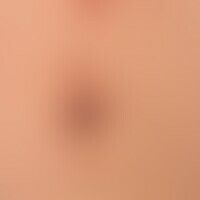

Pemphigus vulgaris: chronically persistent, extensive, painful erosions in previously known pemphigus vulgaris.

Pemphigus vulgaris: inflammatory plaques with extensive crusty erosions that have been running in phases for several years.


Pemphigus vulgaris (localized stage). chronic psersistent, blurred, burning, painful, red, weeping plaques covered with crusts. years of recurrent course (diagnosed as atopic eyelid eczema).

Pemphigus vulgaris: chronic persistent, painful, extensive conjunctivitis.
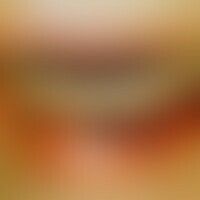

Pemphigus vulgaris (localized stage): chronically persistent extensive, painful erosions (DD: aphthae)

Pemphigus vulgaris: 63-year-old patient with a pemphigus vulgaris (mucocutaneous type) which has existed for 3 years.


Pemphigus vulgaris: extensive, painful erosions on the soft and hard palate
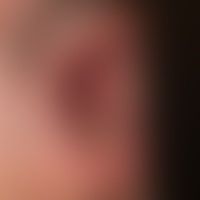
Pemphigus vulgaris: chronically persistent, extensive, painful erosions of the cheek mucous membrane and lips.

Pemphigus vulgaris: chronically persistent, extensive, painful erosions of the cheek mucous membrane and lips.

Pemphigus vulgaris: extensive, painful erosions on the soft and hard palate


Pemphigus vulgaris, stage of generalization. multiple, chronic, since 3 years in batches, symmetrical, trunk-accentuated, easily injured, flaccid, 0.2-3.0 cm large, red blisters, which transform into moist scales and crusts. infestation of the oral mucosa.

pemphigus vulgaris: recurrent clinical picture for months. superficially, weeping, non-detachable (because painful) crusts are found on weeping surfaces. no clinically detectable blisters. at the same time, extensive erosions of the oral mucosa. on searching inspection of the skin, very isolated, easily injured (immediately bursting) blisters can be found (here in this picture on the patient's left shoulder)

Pemphigus vulgaris. multiple, chronic, since 3 years intermittent, symmetric, trunk-accentuated, easily injured, flaccid, 0.2-3.0 cm large, red blisters confluent to larger, weeping and crusty areas. infestation of the oral mucosa.






Pemphigus vulgaris (stage of generalisation): multiple, chronic, symmetrical, trunk-accentuated, easily injured, flaccid, 2.0-10.0 cm large, red plaques with blisters at the edges, which transform into scales and crusts; infestation of the oral mucosa; detection of low-titre pemphigus AK

Pemphigus vulgaris: multiple, chronic, since 3 years intermittent, symmetric, trunk-accentuated, easily injured, flaccid, 0.2-3.0 cm large, red spots, plaques and pallor, confluent to, weeping and crusty surfaces; extensive infestation of the oral mucosa and capillitium.

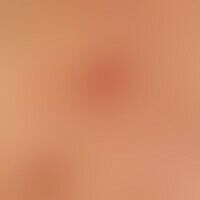
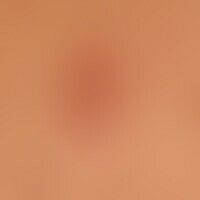

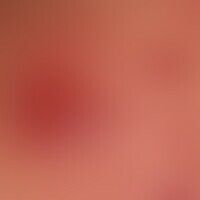


Pemphigus vulgaris: classic (year-long) course of a pemphigus vulgaris. in the last months increasing infestation of the intertrigines. here the picture of Pemphigus vegetans.

pemphigus vulgaris (stage of generalization). 69-year-old female patient. besides older, red spots there are extensive erosions with overlapping skin fragments (middle left picture). a blistering is not recognizable at first sight (see following picture). typical for the blistering of pemphigus is its fragility. only in a fresh stage of relapse blisters are still detectable. otherwise, as in the present picture, erosions, crusts and already healed lesions are mainly found.

Pemphigus vulgaris. 69 years old female patient. besides older, red spots there are extensive erosions with overlapping skin fragments. encircled by a flaccid, hanging blister. marked by a square, erosive area with pushed together epidermis (the diagnostically important Nikolski phenomenon is positive)

Pemphigus vulgaris: Multiple, brown-red plaques which have been running in batches for several years with marginal, easily injured, limp, 0.2-3.0 cm large blisters and crusty erosions.

Pemphigus vulgaris: multiple, chronic, inflammatory plaques that have been running in phases for several years, with large, easily injured, flaccid blisters, bladder remnants and crusty erosions.


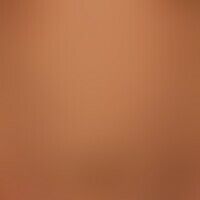
Pemphigus vulgaris: multiple, chronic, since 3 years intermittent, symmetric, trunk-accentuated, easily injured, flaccid, 0.2-3.0 cm large, red spots, plaques and pallor, confluent to, weeping and crusty areas; extensive infestation of the oral mucosa and capillitium.




Pemphigus vulgaris. multiple, chronic, since 3 years intermittent, symmetric, trunk-accentuated, easily injured, flaccid, 0.2-3.0 cm large, red blisters confluent to larger, weeping and crusty areas. infestation of the oral mucosa.

Pemphigus vulgaris. multiple, chronic, since 3 years in batches, symmetrical, trunk accentuated, easily injured, flaccid, 0.2-3.0 cm large, red blisters confluent to larger, weeping and crusty areas.

Pemphigus vulgaris:multiple, chronic, since 3 years intermittent, symmetric, trunk accentuated, easily injured, flaccid, 0,2-3,0 cm large, red blisters, which confluent to larger, weeping and crusty areas, here infestation of the hollow of the knee.

Pemphigus vulgaris: inflammatory, reddish-brown plaques with bladder remnants and crusty erosions that have been running in phases for several years.

Pemphigus vulgaris. multiple, chronic, since 3 years intermittent, symmetric, trunk accentuated, easily injured, flaccid, 0.2-3.0 cm large, red blisters confluent to larger, weeping and crusty areas, here infestation of the lower bacow and the groin region.

Pemphigus vulgaris: multiple, chronic, since 3 years intermittent formation of large, easily injured, flaccid, 0.2-3.0 cm large, red blisters, which have united here to form larger, blister lakes.

Pemphigus vulgaris. direct immunofluorescence technique (DIF) with anti-IgG antibodies. clear fluorescence of the intercellular spaces (ICR)

Pemphigus vulgaris, typical fluorescence pattern.

Schematic representation of the localization of autoantigens in blistering autoimmune diseases (n.C.Günther 2016)


